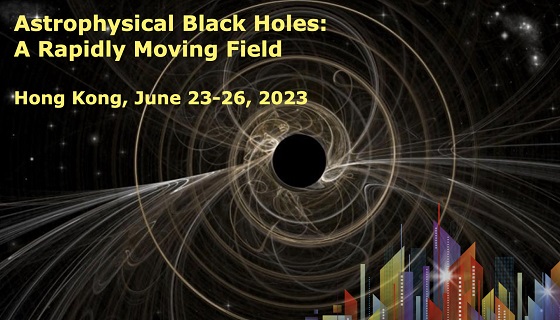Session:- Gravitational Waves.2
Theoretical and observational studies of astrophysical black holes have been in rapid development in recent decades. This conference will present major breakthroughs and key remaining questions concerning our fundamental understanding of astrophysical black holes, such as the formation and collimation of relativistic jets, the accretion and growth of black holes, the measurement of black hole spin, the merger of black holes, the first images of black hole shadow, the particle acceleration mechanisms and transient phenomena around black holes, and the feedback from massive black holes to galaxies.
◎Constraining the acceleration of moving binary black holes using gravitational wave
Binary Black Holes(BBHs) are one of the most important types of Gravitational Wave(GW) sources. Recent studies show that BBHs may form and merge in the vicinity of a SuperMassive Black Hole(SMBH), which results in overestimated masses of black holes due to gravitational and Doppler redshift. One of the distinctive features of these GW sources is that they are accelerating around the SMBH, and the speaker and his research team can search for them by constraining their acceleration using GW signals. In this work, they treat the GW sources which give deviated results from general relativity in the Inspiral-Merger-Ringdown(IMR) consistency test as candidates for potentially accelerating ones. They use the Bondi-Metzner-Sachs(BMS) transformation to construct the GW waveform of accelerating BBHs and use the Bayesian inference method to estimate these candidates' acceleration.
時間:2023.06.26(一) 11:00~11:18
講者:ZHAO, Xin-Miao (Peking University)
↓
↓
◎SgrA* spin and mass estimates through the detection of an extremely large mass-ratio inspiral
Estimating the spin of SgrA∗ is one of the current challenges we face in understanding the center of our Galaxy. In the present work, the speaker and his research team show that detecting the Gravitational Waves(GWs) emitted by a brown dwarf inspiraling around SgrA∗ will allow them to measure the mass and the spin of SgrA∗ with unprecedented accuracy. Such systems are known as eXtremely large Mass-Ratio Inspirals(XMRIs) and are expected to be abundant and loud sources in our galactic center. They consider XMRIs with a fixed orbital inclination and two scenarios for SgrA∗'s spin (s): A highly spinning scenario where s=0.9 and a low spinning scenario where s=0.1. For both cases, they obtain the number of circular and eccentric XMRIs expected to be detected by space-borne GW detectors like LISA and TianQin. They later perform a Fisher matrix analysis to show that by detecting a single XMRI the mass of SgrA∗ can be determined with an accuracy ranging from 0.017 and 0.06 solar masses, while the spin can be measured with an accuracy between 1.7×10⁻⁷ and 7.5×10⁻⁴.
時間:2023.06.26(一) 11:18~11:36
講者:TORRES ORJUELA, Alejandro (TianQin Center (Sun Yat-Sen University))
↓
↓
◎Possibility of black hole spin estimation with time-variable “crescent-shaped” shadow in M87
It is a great challenge to constrain the spin magnitude of the Black Holes(BHs). The speaker and his research team have calculate a radio image of M87 in a flaring state using a part of time-dependent general relativistic radiative transfer code: CARTOON (Takahashi et al. 2022), and found that a time variable "crescent-shaped" shadow appears and its width depends on the BH spin magnitude. Following their previous work (Kawashima et al. 2019, here after TK19), they assume that the accretion flow is optically thick against the Synchrotron Self-Absorption(SSA) in a flaring state, where the mass accretion rate will be relatively higher than that observed by the Event Horizon Telescope(EHT) in 2017. As is known that M87 shows a time variability over a few days, they have developed a steady model of TK19 by incorporating a time variability of accretion flow with a time scale of a few days, as observed in M87. In the light curves of the radio images, they have also found a time-delayed variability of the photon ring component, which would be also an important feature to probe the BH spin. The time variability of the "crescent-shaped" shadow may depends on the BH spin magnitude. In this talk, they discuss about a behavior of the “crescent-shaped” shadow in a toy model and future issues.
時間:2023.06.26(一) 11:36~11:54
講者:TAKAHASHI, Mikiya (University of Tsukuba)
↓
↓
地點:香港大學 百週年校園 CPD 3.04 Centennial Campus
語言:英語
是會議作坊,參加者必須登記,2023.04.30 截止
【此屬轉載訊息,以主事單位發佈為準】
此活動由香港大學物理系主辦。
https://astrobh.physics.hku.hk/event/3/timetable/#all.detailed


